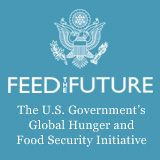Publication
ScienIfic AnimaIons Without BordersSM (SAWBO): An InternaIonal CollaboraIve Approach for Building ScienIfic EducaIonal Materials to Enable PrevenIon of Post?Harvest Losses in Developing NaIons
Details
Author(s):
Julia Bello-Bravo; Francisco Seufferheld; Laura D. Steele; Tolulope A. Agunbiade; Daniel Guillot; Manuele Tamo; Ibrahim Baoua; Malick Ba; Clementine Dabire; Barry R. Pittendrigh
Type of Document:
Media
Publisher/Journal:
Not Available
Date of Publication:
2012
Place of Publication:
Kigali, Rwanda
Links
Description
A poster presented at the 2012 Global Pulse Researchers Meeting, Kigali, Rwanda- “Transforming Grain-Legume Systems to Enhance Nutrition and Livelihoods”. Abstract: International organizations, government agencies, non-governmental agencies, researchers, adult educators, and extension agents have long sought effective ways to provide useful information to the least educated people throughout the world. Although there is no absolute relationship between poverty and illiteracy, many poor people are also low-literate learners (or illiterate) and many live in rural areas of developing countries. Most educational materials targeting low-literate or illiterate individuals have involved the use of books, radio programs, or television. However, an estimated 80% of people living in rural areas of developing countries now have access to information via cell phones. The rapid development of cell phones and the Internet has also changed how people learn in that both literate and illiterate learners are increasingly familiar with and receptive to technology-mediated activities. Regardless of their level of formal education, many people interact with technology, discover things for themselves, and learn through multi-media. Therefore, providing useful information to illiterate individuals should no longer depend only on books, radio, or television programs; educators should now recognize that the cell phone and other electronic video viewing devices are valuable learning tools. Here we describe how information in the form of short animations can be transferred to those who deliver information to low-literate learners and to the learners themselves via cell phones. Voice overlays in a diversity of languages can be added to these animations so that ideas can be efficiently shared across language groups. The animated videos, which are being developed by Scientific Animations Without Borders? (SAWBO?), can be viewed on cell phones or other video capable electronic devices. The development of these animations is multi-disciplinary and horizontal in that it involves the free exchange of ideas amongst collaborators through the utilization of social networks and cell phone technology.
